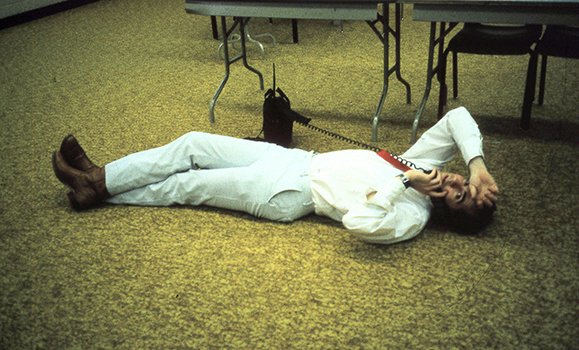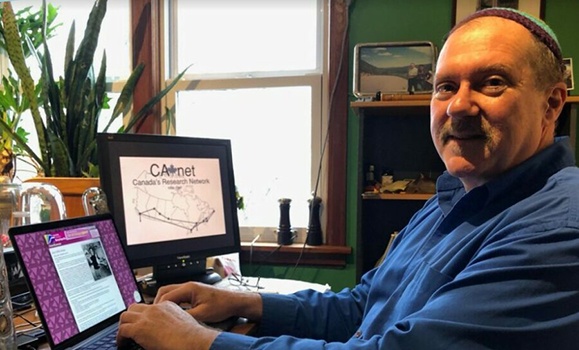Dan MacKay (BCS’89) remembers one summer day in 1991 very well. He was in the Sculpture Court at the ±«Óătv Arts Centre for the official connection of the province to the rest of the Internet.
The usual ceremonial flourishes wouldn’t do for such a special occasion.Ěý
“We had our equipment set up in the Sculpture Court, and the premier was there, and instead of cutting a ribbon, I had him connect two pieces of ethernet together — an old kind of ethernet called 10base2,” recalls MacKay, who was a key player on the technical team that built the Internet in Nova Scotia and across Canada.Ěý
While the day the team officially connected Nova Scotia to the transcontinental network stands out as a highlight in MacKay’s mind, there were many exciting and challenging moments during the project.Ěý
“Every day there was a new challenge,” the Faculty of Computer Science alum says. “We were building and improving the speed of the internet across Canada, and I got to talk to tech people at schools, libraries and businesses all across the province about exciting new installations and improvements.”
MacKay also played a role in developing the technological process that syncs time across every clock, computer and watch connected all over the world.Ěý

MacKay on the day that Park View school in Bridgewater, N.S. was connected to the Internet
Everything was new
Ěý
There’s no wonder MacKay was involved in building the internet. From a young age, he was immersed in the world of technology thanks to his two older brothers, one of whom graduated a member of the Class of '75 with a degree in physics.
“By the time I was 5 years old, I had a home physics, chemistry and engineering lab to play with,” says MacKay. “When I was just barely a teen, I got to try out programming on paper tape on the new Intel 8080 chip in my brother Michael’s lab.”
Building the Internet in a time before it was widely available came with its own set of challenges.
“Everything was new,” he says. “The very first routers we started working with were built in Burnside using very experimental software and had all kinds of serious problems that made them unusable. The next batch was from the USA but had software built in Ontario which had never been connected to the Internet before. The tools we had for diagnosing problems with the internet were very primitive — they still are — and so we got really good at reading the nuances of what tools we had."
When asked how the Internet has changed since those early days, he replies: "It would be easier to document the things that haven’t changed! That is e-mail and the underlying protocol, TCP/IP."Ěý
MacKay says the biggest revolutions to the Internet since its inception are the development of the World Wide Web and advances in Internet-wide search engines.
Recommended reading:ĚýDal computer science students hack their way to national competition
A shifting sectorĚý
Ěý
This past January, MacKay held a party in the Goldberg Computer Science Building to mark the 40th anniversary of the Internet switching to the protocol TCP/IP, which we still use today.
The event inspired MacKay to work on a project documenting the history of local public, free, subsidized, and egalitarian access to the Internet through organizations like The Chebucto Community Net and C@P and a piece of software called C-Suite.
When asked about the future of the Internet and its evolution, MacKay sees some major new shifts underway.
"That answer has changed drastically in the last few months, and it will continue to do so. It seems a great deal of our lives will be mediated by artificial intelligence which will vary from administration tasks to advanced medical consultations.”Ěý
While the Internet continues to evolve, one thing is certain: MacKay’s contributions to the tech industry and connecting Nova Scotia to the internet will always be remembered and celebrated.

